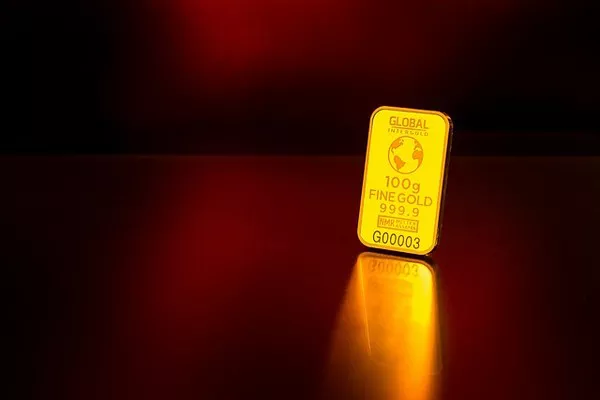The world of finance is a complex web where various assets and currencies interact in a delicate dance, influencing each other in ways that often defy simple explanation. One such intriguing relationship is the inverse correlation between gold and the U.S. dollar. Gold, often considered a safe-haven asset, tends to move inversely to the value of the U.S. dollar. This article delves into the historical, economic, and psychological factors that contribute to this intricate relationship.
Historical Perspective:
To understand the inverse relationship between gold and the U.S. dollar, it’s crucial to examine historical events that have shaped these markets. The gold standard, which linked the value of a country’s currency to a specific amount of gold, prevailed for much of the 19th and early 20th centuries. However, the abandonment of the gold standard during the Great Depression in the 1930s marked a pivotal moment in global monetary history.
In the post-World War II era, the Bretton Woods Agreement established a system where major currencies were pegged to the U.S. dollar, and the U.S. dollar itself was pegged to gold. This arrangement created a quasi-gold standard, but it proved unsustainable. In 1971, then-U.S. President Richard Nixon abandoned the gold standard entirely, severing the link between the U.S. dollar and gold. This move paved the way for the modern era of fiat currencies, where money is not backed by a physical commodity but rather derives its value from government regulation.
The Fallout of the Gold Standard:
The dissolution of the gold standard marked a fundamental shift in the dynamics between gold and the U.S. dollar. With the greenback no longer tethered to a fixed quantity of gold, its value became subject to fluctuations based on various economic factors. Simultaneously, gold, which had lost its direct connection to currencies, became a standalone asset influenced by market demand, geopolitical events, and investor sentiment.
Inverse Relationship: Economic Factors:
The inverse relationship between gold and the U.S. dollar is deeply rooted in economic fundamentals. When the U.S. economy is thriving, the Federal Reserve often responds by raising interest rates to prevent overheating and curb inflation. Higher interest rates make holding non-interest-bearing assets, such as gold, less attractive to investors seeking yield. Consequently, the demand for gold diminishes, leading to a decrease in its price.
Conversely, during economic downturns or periods of uncertainty, the Federal Reserve tends to lower interest rates to stimulate borrowing and spending. In such times, investors seek safe-haven assets like gold to preserve capital and hedge against economic instability. The increased demand for gold during these periods tends to drive its price higher.
Inverse Relationship: Psychological Factors:
Psychological factors also play a significant role in the inverse relationship between gold and the U.S. dollar. Gold is often perceived as a store of value and a hedge against inflation and currency depreciation. In times of economic uncertainty or geopolitical tension, investors flock to gold as a safe haven, driving up its price.
On the other hand, the U.S. dollar is viewed as a global reserve currency and a symbol of economic stability. In times of economic prosperity, confidence in the U.S. dollar increases, leading investors to prefer holding dollars over alternative assets like gold. This confidence can be reinforced by positive economic indicators, strong GDP growth, and a robust labor market.
Global Events and Geopolitical Tensions:
Geopolitical events and global uncertainties can intensify the inverse relationship between gold and the U.S. dollar. During geopolitical crises, investors often seek the safety of gold, driving its price higher. This flight to safety can be accompanied by a decline in the U.S. dollar as investors move away from riskier assets and seek refuge in alternative currencies.
For example, the global financial crisis of 2008 saw a surge in gold prices as investors sought stability amid the collapse of financial institutions and widespread economic turmoil. Similarly, events such as trade tensions, political unrest, or natural disasters can trigger fluctuations in the inverse relationship between gold and the U.S. dollar.
See Also Where Will Gold Be In 5 Years? A Five-Year Outlook
Conclusion:
The inverse relationship between gold and the U.S. dollar is a complex interplay of historical legacies, economic fundamentals, and psychological factors. As the global financial landscape evolves, so too does the dynamic between these two assets. Investors, policymakers, and analysts must navigate this intricate dance, considering a myriad of factors that contribute to the ebb and flow of gold prices and the value of the U.S. dollar.
In an ever-changing economic environment, understanding the inverse relationship between gold and the U.S. dollar provides valuable insights for making informed investment decisions and managing risks in a world where financial markets are inherently interconnected.


